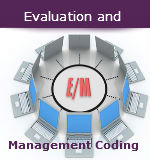It has happened again. A whistle blower called her insurance carrier and told them that one of my clients, a primary care physician, illegally billed for services provided to her on a particular day. Did my staff catch the error? No. Why not? Because in some instances, medical practices do not allow liberal access to patient notes – only the E/M service, procedures provided, and diagnosis codes. In this particular practice, my staff can look up a note if the charge looks questionable but not all practices want billing offices to have free reign with their EMRs, and this charge did not look suspicious.
Evaluation and Management Coding – Whistle Blower Reports Fraud
The patient was new and had “issues” due to an abnormal pap which the encounter form indicated. She also had an influenza vaccination and a depression screening (which was not on the encounter form). A level four, 99204, was billed along with an administration of a flu vaccine, and the flu vaccine.
So what happened? The patient received a statement and felt she did not owe the money. The payer processed the claim and charged a two-hundred dollar ($200) deductible due to her “medical necessity” diagnosis code: 795.01-PAP smear of cervix with ASCUS. The patient’s insurance coverage does not charge a deductible or co-payment for “preventive” visits. This was not a preventive visit.
The patient called both the billing department and the payer and said she had no problems. Her visit was a “meet and greet” and that she should not have to pay the deductible. The provider heard from the payer in a formal letter and wants her notes regarding this patient. This is NOT A GOOD SIGN for a provider who does not lock her notes (which is recommended no longer than 48 hours after the visit) and also, in the three days that I have reviewed her notes, more information has been added and still not delivered to the insurance carrier. To complicate the matter, this patient happens to be a healthcare provider who understands coding and knows she was overcharged for the visit.
I was asked what to do. I said, “Document the truth.” The patient’s chief complaint (CC) was: NO COMPLAINTS. This “CC” was transferred from the front desk electronic appointment scheduler and not updated in the notes by the provider. A chief complaint is required for each progress note. If the chief complaint is missing, the documentation is not adequate for even the lowest level E/M code. However, as I scanned the note I noticed that the patient was new to the area and wanted to establish herself with a medical practice. She had a history of cervical dysplasia, and a HPI performed, minimal exam, and a depression screening which indicated the patient was mildly depressed with many issues such as insomnia, anxiety, lack of appetite, etc.
I asked the provider, did she present with complaints once she was alone with you? Not all patients divulge the reason they want an appointment to a front desk person. How much time did you spend with her? Did you counsel her on health issues concerning her previous experience with cervical dysplasia or the signs and symptoms of depression? Did she complain about fatigue, insomnia, and anxiety, which prompted you to give her the depression screening OR did you give her the depression screening to rule out suicidal ideation because this is part of the hospital’s new mandate to record this type of data which is fed back to the insurance payers? Did you take blood? Order any tests? The provider simply scheduled her for a physical exam and PAP for the following month which insurance paid without a deductible due.
And so this plight continues with no end result as yet. This is a clear example as to WHY providers need to understand the need for accurate documentation, particularly with ICD-10 around the corner. Sequencing of events count, as well as time spent, especially if a visit is primarily based on time and/or counseling. This provider did not indicate she had read the prior medical records nor were they scanned in the EMR. The patient mentioned she had a LEEP procedure and an abnormal PAP which was in the year 2000.
When all is said and done, based on how the provider finally documents this visit, (which should have already been done, signed and locked), we may end up changing the E/M visit to a lower level, billing for a counseling code such as 99401 based on time, or if nothing really happened except a flu vaccine and some feedback on her past history, the patient may have to pay out of pocket for a basic meet and greet because technically, the documentation does not cover the requirements for a regular office visit. Information to date is conflicting and inadequate.
Coding and documentation is not black and white. Providers should understand the rules for E/M coding. A thorough training is offered through www. and I highly recommend it to grasp the E/M concept or to use as a refresher course.
![[CCO] Certification Coaching Organization LLC [CCO] Certification Coaching Organization LLC](https://www.cco.us/wp-content/uploads/2015/05/CCO-Logo-2015-d3-500px.png)



